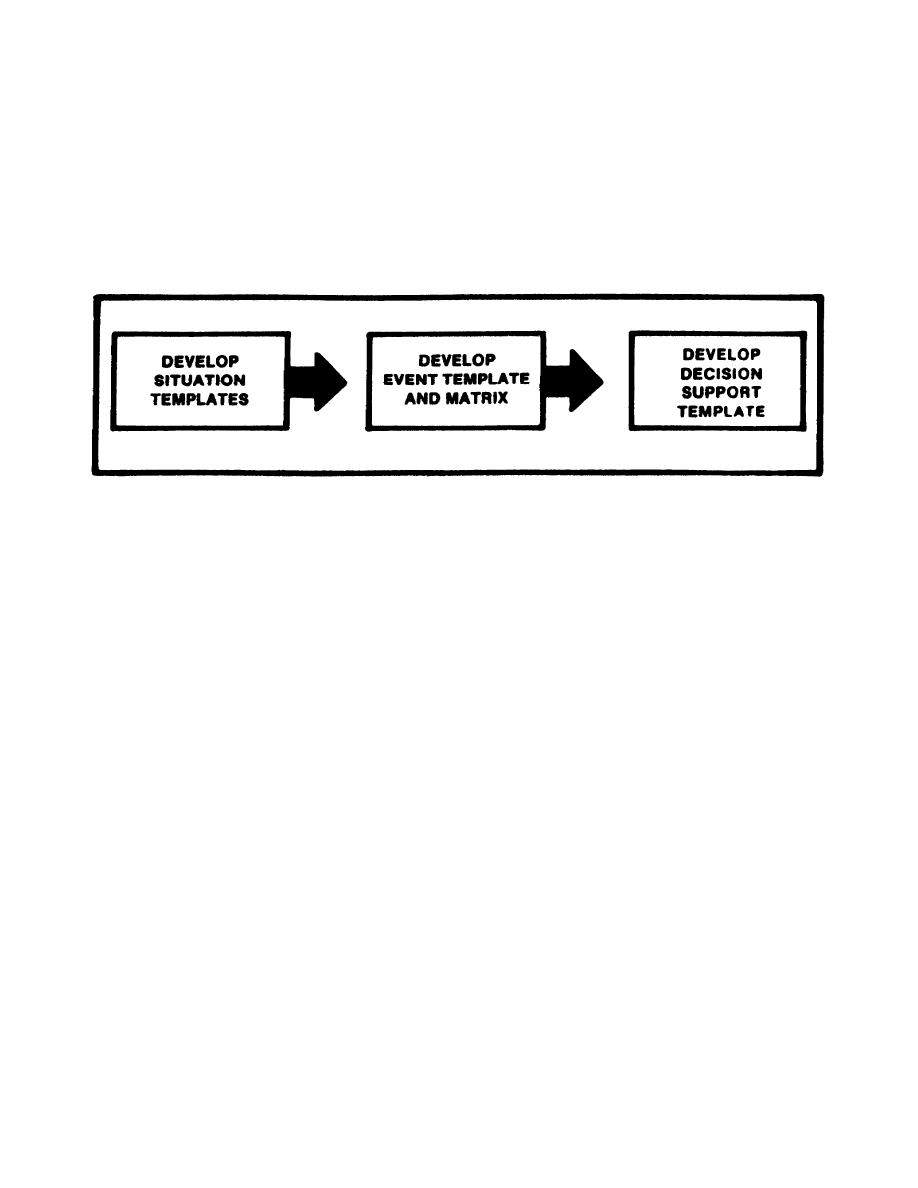
THREAT INTEGRATION
Threat integration is accomplished through the development of situation, event, and
decision support templates. Doctrinal templates and weather and terrain factor
overlays provide the basic tools for threat integration. Figure 5-1 shows the
developmental steps in the threat integration process.
Figure 5-1. Threat Integration Process.
The initial template prepared during threat integration is the situation template.
The situation template is basically a doctrinal template with weather and terrain
constraints applied. It shows how the enemy might deviate from doctrinal
dispositions or adjust frontages, depths, or echelon spacing to account for weather
and terrain effects. Doctrinal templates, the combined obstacle overlay and
avenues of approved overlay are the basic for developing situation templates.
Situation templates focus on operations in specific mobility corridors with avenues
of approach. A mobility corridor (MC) is defined as an area within an avenue of
approach which permits movement and maneuver. Situation templates graphically
depict how threat forces might adjust doctrinal formations to move, shoot, and
communicate within these mobility corridors. Based on these assumed adjustments,
we can then determine where the enemy commander might place ground surveillance
radars, CPs, communication sites, weapons systems, combat support elements, CSS
facilities, and concentrated air assets.
Through the use of the doctrinal templates, you can visualize the absurdities of
tanks in swamps. By using the situation template, you can correct these
absurdities to reflect how enemy units and equipment might deploy in a given
situation.
IT 0462
5-2


 Previous Page
Previous Page
